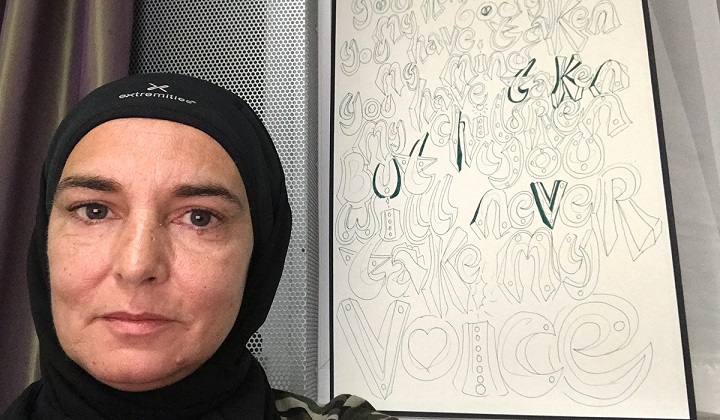Months after converting to Islam, the Irish singer-songwriter Sinéad O’Connor has revealed what life is really like to be a Muslim in Ireland, Extra.ie reported.
“I think I’m really really good actually, really good,” she told the Dave Fanning Show on 2FM.
“That’s why I’ve come, partly to let people know I’m around as well because it’s been four years since I did anything.
“I’m missing it (live performing)…it’s what I do. I’m rebuilding life.”
In October 2018, the popular Irish singer-songwriter revealed on Twitter that she had ditched Catholicism for Islam and changed her name to Shuhada’ Davitt.
She spoke about embracing Islam, being welcomed into the Muslim community, and changing her name.

Sinead reveals that she has converted to Islam.
Admitting that it is not easy being Muslim in Ireland, she added that she hoped to be able to change people’s misconceptions about her faith.
“I’ve been a theology student since I was about seven years of age literally…..I never thought I would choose one religion…and I left Islam for last to study because I had prejudices,” she said.
“But when I started finally reading it…I realized I’d been a Muslim all my life and I didn’t know it. Being a Muslim is actually a way of thinking.
“I want to help to smash some of the stigma around Islam. So that’s why I was very public about it.”
Last week, the Irish Muslim star spoke to Eddie Redzovic of The Deen Show, explaining her passion for Islam and defending it against stigma.
According to the 2016 Pew Research Centre report, Religion and Education Around the World, it is estimated that Ireland’s Muslim population stands at approximately 70,000, of whom 2,000 are said to be doctors.
A 2011 census recorded 49,204 Muslims, including nearly 12,000 school-aged children. The numbers represent a 51 percent increase since 2006.
